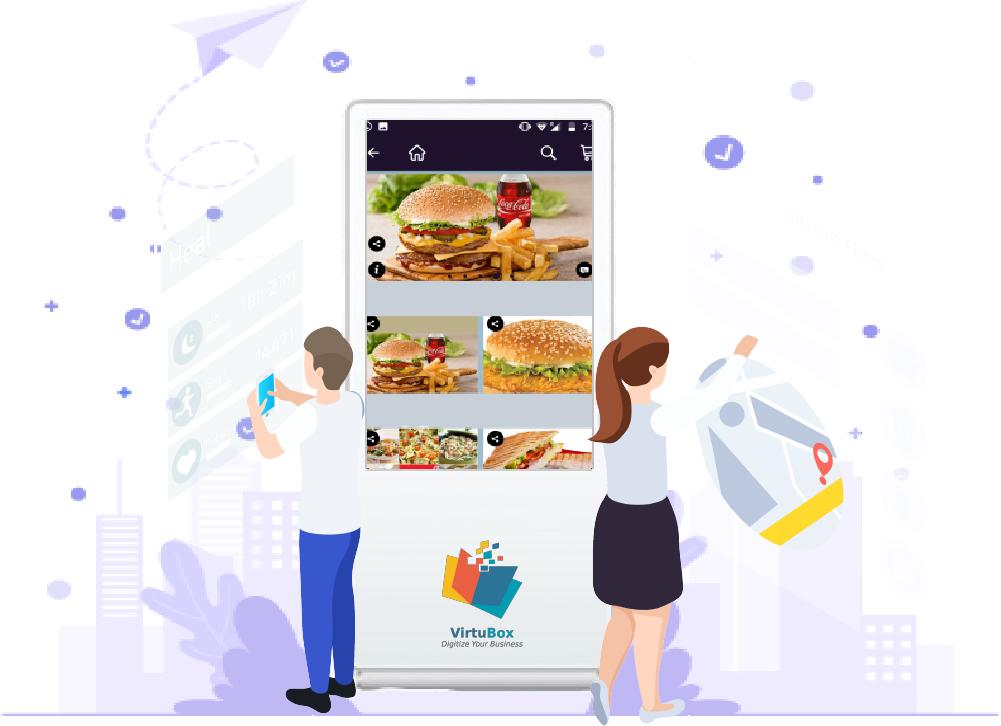
Many of us love the double quarter-pounders served by McDonald’s. However, don’t we just hate waiting in the queue trying to place an order? Over-crowding, waiting endlessly for our turn and errors that creep up while placing our orders have made the very experience of take-out a nightmare.
No wonder several McDonald’s outlets have switched to self-service or self-ordering kiosks. Several studies have shown that switching to self-service ordering kiosks can lead to better customer experience, quicker service, increased profits and saving of resources.
This blog takes a look at whether self-service ordering kiosks really reduce cost or not when compared to labor costs. It also specifically looks at the case study of McDonald’s, which switched to self-service ordering restaurant kiosks a couple of years back, and has claimed to have saved money because of this switch. But first, let us understand what is a self-service kiosk.
Table of Contents
What is a self-service ordering kiosk?
Self-service kiosks have become increasingly popular in recent times. It is perhaps hard to find a retail space, which does not have a self-ordering kiosk or a self-service vending machine. You can find them in malls, restaurants, big offices and railway stations. Self-service kiosks are digital and not manned by any person. You can order your food, find your way and book your tickets at such kiosks. Many self-service kiosks come pre-loaded with software that allows you make your payments and take a print out of the receipt, thereby working as ticketing kiosks. In short, a self-service kiosk can do the job of a concierge, a receptionist, a booking agent, all rolled into one.
Advantages of a self-service kiosk
• Kiosks save resources:
Imagine putting up a booth or a counter that is manned by human staffers. This would require hiring professionals, training and monitoring their performances and dealing with their HR-related activities. Not only will these activities cost you money, but they would also consume your time and resources. Replacing human staff with automation can help your company save both money and resources.
• Kiosks are easily adaptable:
A kiosk machine is far more adaptable to business-related changes than an actual human being. A change in the inventory or a simple price modification can simply be fed into the system of a kiosk, which would quickly adapt to the changes. Compare this to an employee, who has to be informed about the changes and then trained regarding the changes being carried out. Simply put, there can hardly be any comparison when it comes to adaptability. Machines are far more adaptable than humans.
• Kiosks can serve more customers:
A multi-touch screen kiosk can service several customers at the same time. This is not possible with a human being. A receptionist can only cater to a single customer or answer a single question at a time. Replacing an employee with a multi-tasking food ordering kiosk machine can help you to serve several customers at a time.
• Kiosks save service time:
This is related to the previous point we mentioned. Serving multiple customers can mean that you can save a lot of time overall. Reducing time taken to serve each customer can mean that you are able to serve more people at a time, thereby increasing your productivity, sales and profits.
• Kiosks reduce cost:
Perhaps the most important advantage of having a self-service ordering kiosk is that it reduces operational costs to a great extent. Installing a kiosk might incur a one-time cost. However, recurring overhead costs are usually minimal. Additionally, if you sign up for an annual maintenance contract, you are likely to save a ton of money on frequent upkeep work and software upgrades.
Do McDonald’s self-service ordering kiosks save money?
According to a recent report by Forbes, McDonald’s is projected to save billions of dollars by replacing their smiling staff members with giant LED screens. McDonald’s has even ordered self-service ordering kiosks for all of its locations.
This is because the minimum wage in the US has gone up to $15 an hour in recent years. This has put additional burden on several retail chains across the US that are required to cough up extra money for hiring labor. Several food retail chains in the US are now switching to self-service kiosks, gradually replacing staff members one by one. Brands like Panera Bread and Tex-Mex food chain giant Chilli’s have all shifted to self-service kiosks.
According to studies, this shift to ‘technology’ from ‘humans’ is nothing new. Brands have responded to rising labor costs by steadily shifting to technology. Self-service ordering, online ordering, reducing sit-in services are all related to the broader trend of shifting towards technology. Surely this has upset entry-level job seekers, as their skills have become redundant in a tough job market. However, for companies around the world this has led to greater profitability, streamlining of operations and reduction of overhead costs.
Interestingly, studies have also shown that kiosks have also boosted sales to a great extent. Having touch-screen kiosks allows consumers to spend more time at the machine, rummaging through the product catalogues and making impulse purchases, that won’t be possible if a counter staff simply walks you through the menu. As such, companies believe that it is a win-win situation for them.
Conclusion
Switching to a self-service ordering kiosk was originally meant to lessen the burden of employees. However, seeing the myriad of benefits that such kiosks provide, F&B companies have started to increasingly shift towards self-service kiosk machines. Many malls have introduced food court kiosks in their multi-brand food courts. Reduction in costs, boosting of sales, streamlining of operations and production efficiency have all increasingly drawn companies towards self-service ordering kiosks.
If you are a small and medium enterprise trying to gain a foothold in an increasingly competitive food and beverage market, you should immediately shift to self-service kiosks. VirtuBox is one of the leading providers of self-service kiosks. It helps businesses to implement a complete kiosk solution which is tailor made according to their needs.
VirtuBox offers a multi-purpose and interactive touch screen smart kiosk, called Directa, which is sure to give your business the digital edge it requires. VirtuBox Directa Kiosks are slim and elegantly designed keeping in mind the brand values of its clients. It is also robust enough to keep in public places, food courts and restaurants.
Restaurant and F&B outlet owners are often tasked with choosing the type of kiosk they would like for their business. Directa is a very good option as it takes up less space and stands upright on the wall. The best part of a totem style kiosk is it is visible from afar. Anyone can easily locate it.
So get in touch with the experts at VirtuBox to give your food business the advantage of automation technology by saving costs and increasing the efficiency of their resources. Let your customers use the advanced self-service ordering kiosks and reduce their waiting time in lines and have a great experience.
About the Author:
Prakash Rastogi, founder and CEO of VirtuBox, holds B.Tech & M.Tech degree from IIT Kanpur with 14+ yrs of experience.He is a serial entrepreneur, currently working on Digital experience platform which helps businesses to digitize using mobile technologies. The aim of VirtuBox is to provide digital technology to organisations and individuals at affordable prices and that does not require coding.


